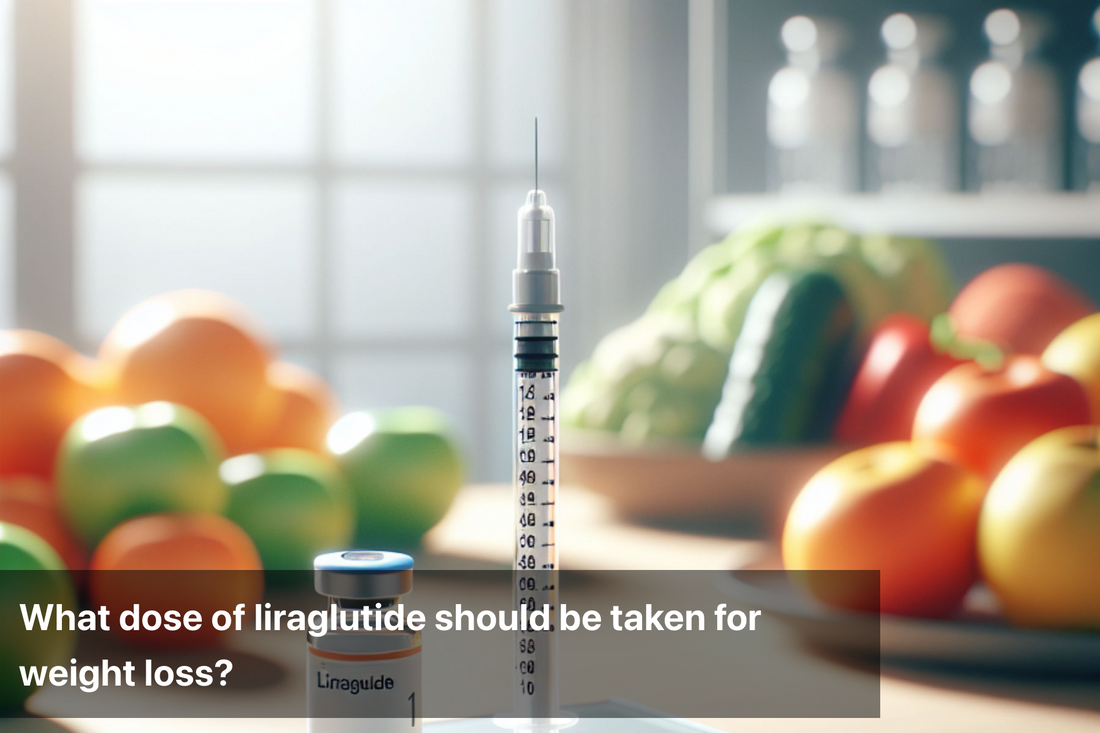
What dose of liraglutide should be taken for weight loss?
Share
Liraglutide is a medication originally developed to manage type 2 diabetes. It belongs to a class of drugs known as GLP-1 receptor agonists. Recently, it has gained significant attention for its effectiveness in aiding weight loss. For those struggling with obesity or overweight issues, liraglutide can serve as a beneficial tool in their weight management journey.
When discussing liraglutide for weight loss, it's essential to understand how it works. This medication helps to regulate appetite and enhance feelings of fullness after meals. As a result, users are more likely to consume fewer calories, which can lead to substantial weight loss over time. Many healthcare professionals recommend liraglutide not only to improve physical health but also to address related conditions, such as hypertension and sleep apnea.
In clinical trials, patients taking liraglutide demonstrated more significant weight loss compared to those not using the medication. The connection between liraglutide and weight loss is clear; however, it should be used in conjunction with a balanced diet and regular physical activity for optimal results.
Liraglutide & Weight Loss
-
Appetite Suppression:
Liraglutide mimics the action of the naturally occurring hormone GLP-1 (glucagon-like peptide-1), which regulates hunger and satiety in the brain.
It reduces appetite by affecting brain receptors, making people feel less hungry and thus eat fewer calories.
-
Increased Feelings of Fullness (Satiety): By stimulating GLP-1 receptors, liraglutide enhances feelings of fullness after eating, which helps prevent overeating and reduces the overall food intake.
-
Slower Gastric Emptying: Liraglutide slows down the emptying of food from the stomach into the intestines. This prolongs the sensation of fullness after meals, further helping to control calorie intake.
-
Improved Insulin Sensitivity: Liraglutide improves the body's response to insulin, which not only helps with blood sugar control (especially in people with type 2 diabetes) but also aids in fat metabolism and supports weight loss.
Neha Singh (M.Sc - dietetics & food service management) recommends the same as "Liraglutide’s ability to regulate appetite and enhance satiety offers a science-backed solution for weight loss, transforming how obesity and related health conditions are managed when paired with lifestyle changes."
Understanding Liraglutide Dosage
|
Condition |
Brand Name |
Starting Dose |
Incremental Increase |
Maintenance Dose |
Maximum Dose |
|---|---|---|---|---|---|
|
Type 2 Diabetes |
Victoza |
0.6 mg once daily (for the first week) |
Increase to 1.2 mg after 1 week |
1.2 mg to 1.8 mg once daily |
1.8 mg daily |
|
Weight Loss |
Saxenda |
0.6 mg once daily (for the first week) |
Increase by 0.6 mg weekly |
3.0 mg once daily |
3.0 mg daily |
-
Administration: Subcutaneous injection (under the skin).
-
Injection Sites: Abdomen, thigh, or upper arm.
-
Timing: Once daily at the same time, regardless of meals.
Elevate Now provides science-backed, doctor-prescribed weight loss solutions, helping individuals achieve a 15-18% reduction in body weight within six months. Unlike traditional methods, it targets underlying medical factors like metabolism, deficiencies, and inflammation for lasting results.
With expert supervision, Elevate Now combines effective medications such as GLP-1, SGLT2 inhibitors, Orlistat, and Metformin with personalized coaching on nutrition, fitness, sleep, and stress management.(check your eligibility here)
This holistic approach ensures sustainable weight loss, making fad diets a thing of the past.(Learn More)
Factors Influencing Liraglutide Dose
-
Condition Being Treated:
Type 2 Diabetes: The starting and maintenance dose may be lower (starting at 0.6 mg daily, increasing up to 1.8 mg) to manage blood sugar levels.
Weight Loss: Higher doses are used for weight management, with a typical maintenance dose of 3.0 mg daily.
-
Individual Response:
Some individuals may respond better to lower or higher doses based on their body's response, tolerance, and side effects.
Tolerance to Side Effects: Patients may start at a lower dose and gradually increase to reduce the likelihood of side effects like nausea or gastrointestinal discomfort.
-
Age:
Older adults may require a more cautious approach to dosing, starting at lower doses to avoid the risk of side effects or complications.
Children and adolescents may not be prescribed Liraglutide, as its use in younger populations is typically limited.
-
Kidney or Liver Function:
Patients with kidney or liver impairments may need dosage adjustments, as the medication is metabolized and excreted by the kidneys and liver.
Kidney disease may require close monitoring or a reduced dose.
-
Other Medications: Liraglutide can interact with other medications, particularly those that lower blood sugar (like insulin or sulfonylureas), and this may necessitate dose adjustments to avoid hypoglycemia (low blood sugar).
-
Body Weight: For weight loss, the dose is typically titrated up over a few weeks until reaching 3.0 mg, but the starting dose may vary based on a patient's weight or body mass index (BMI).
-
Pregnancy and Breastfeeding: Liraglutide is generally not recommended during pregnancy or breastfeeding, which may affect the decision for dose adjustments or alternative treatment options.
How to Properly Administer Liraglutide?
-
Prepare the Pen:
Wash your hands.
Attach a new needle, remove both caps, and prime the pen by dialing the dose and pressing until a drop appears.
-
Choose Injection Site:
Common sites: abdomen (avoiding the navel), thighs, or upper arms.
Rotate sites to avoid irritation.
-
Inject:
Clean the skin with an alcohol swab.
Pinch the skin, insert the needle at a 90-degree angle, press the button to inject, and hold for 5 seconds.
-
Dispose of Needle: Remove the needle and dispose of it in a sharps container.
-
Storage: Store unused pens in the refrigerator; once open, can be kept at room temperature for up to 30 days.
Summary
Liraglutide (brand name Saxenda) is a medication used for weight loss that works by suppressing appetite, enhancing feelings of fullness, and slowing gastric emptying. The typical dose for weight loss starts at 0.6 mg daily and is gradually increased to a maintenance dose of 3.0 mg daily.
It should be administered via a subcutaneous injection once daily at the same time, preferably in the abdomen, thigh, or upper arm. The dosage may vary based on individual factors such as age, kidney or liver function, response to the drug, and interactions with other medications. Liraglutide is most effective when combined with a healthy diet and regular physical activity.


